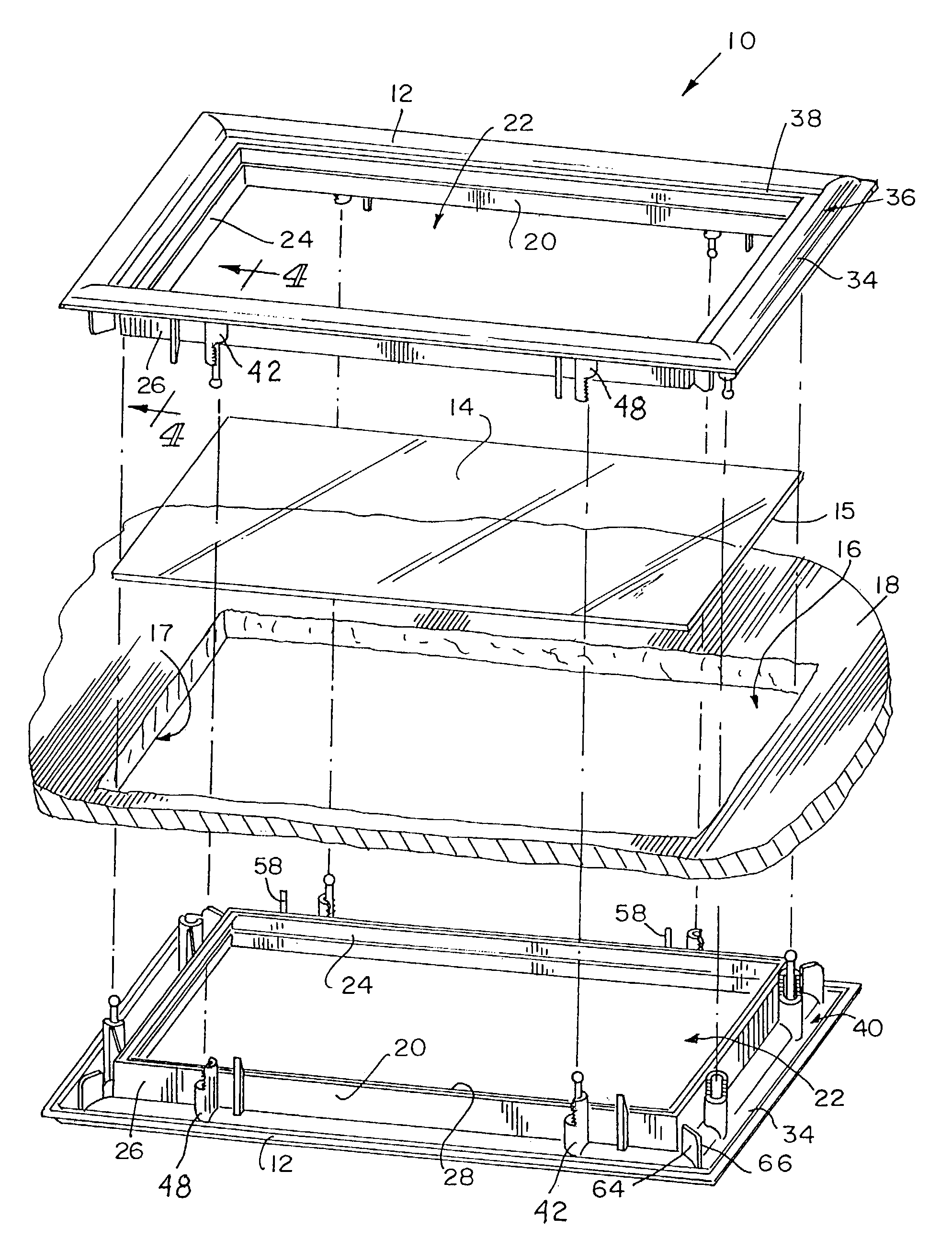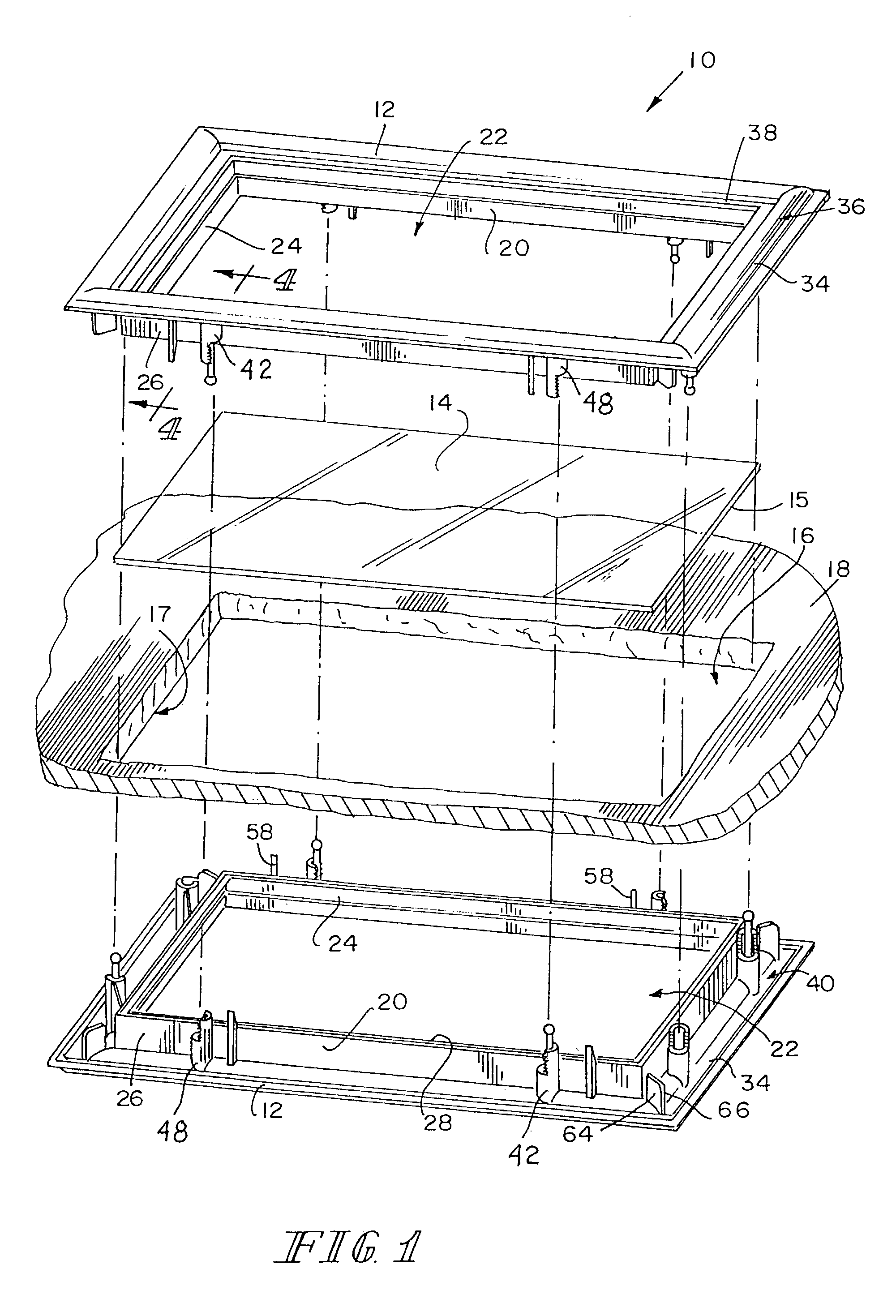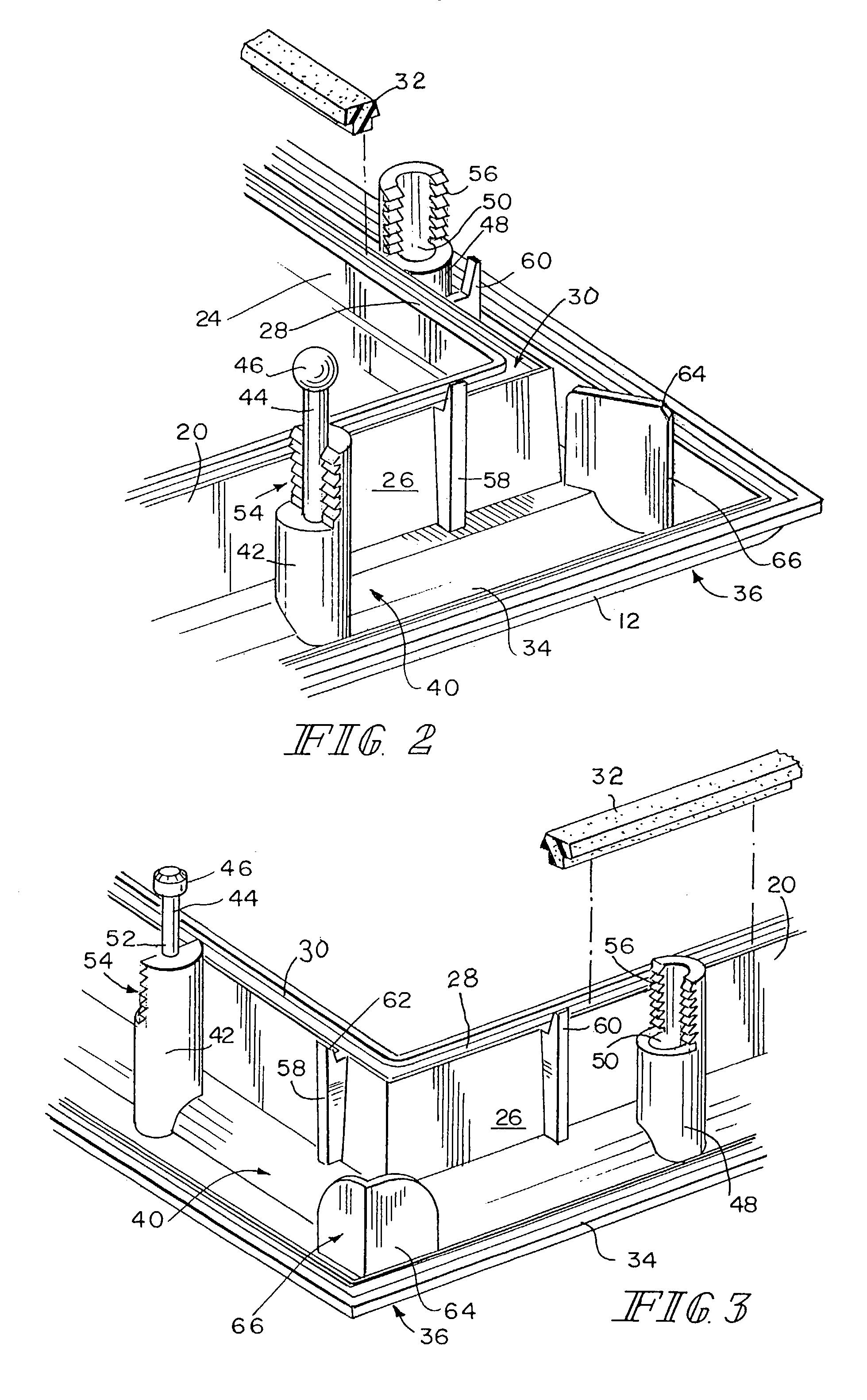Molded snap-together frame
a frame and snap-together technology, applied in the field of windows, can solve the problems of time-consuming and difficult mounting of windows using this system, substantial difficulties can develop, drawbacks in the conventional devices commonly employed, etc., and achieve the effect of reducing capital costs and eliminating any mold-to-mold discrepancy
- Summary
- Abstract
- Description
- Claims
- Application Information
AI Technical Summary
Benefits of technology
Problems solved by technology
Method used
Image
Examples
Embodiment Construction
[0021]A frame assembly 10 of the present invention, shown in FIGS. 1–5 employs two identical sub-assemblies 12 placed in confronting relationship to each other on opposite sides of an architectural element 14 for incorporation into an aperture 16 in a partition 18. The illustrated architectural element 14 is a windowpane unit, but it will be appreciated by those skilled in the art that other architectural elements, such as vents or decorative panels and other devices, can be substituted for the windowpane unit without departing from the spirit of the present invention. The frame assembly 10 is illustrated to be rectangular, but it will be appreciated by those skilled in the art that other shapes for the frame assembly 10 and the corresponding aperture 16 can be accommodated by the present invention such as circular, square, octagonal, oval, and so forth. The partition 18 can be in the form of a fixed wall, a door, a divider, a partition or any other static or movable structural barr...
PUM
 Login to View More
Login to View More Abstract
Description
Claims
Application Information
 Login to View More
Login to View More - R&D
- Intellectual Property
- Life Sciences
- Materials
- Tech Scout
- Unparalleled Data Quality
- Higher Quality Content
- 60% Fewer Hallucinations
Browse by: Latest US Patents, China's latest patents, Technical Efficacy Thesaurus, Application Domain, Technology Topic, Popular Technical Reports.
© 2025 PatSnap. All rights reserved.Legal|Privacy policy|Modern Slavery Act Transparency Statement|Sitemap|About US| Contact US: help@patsnap.com



